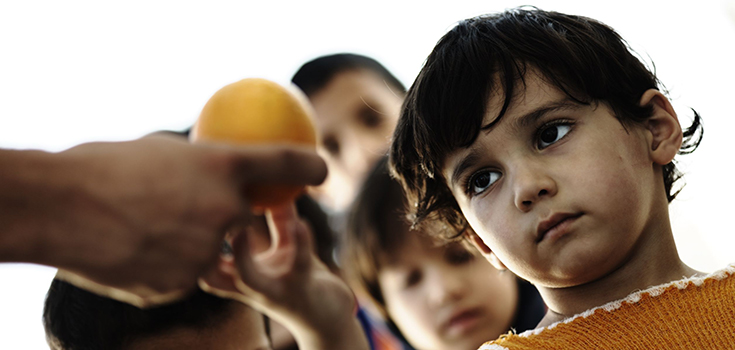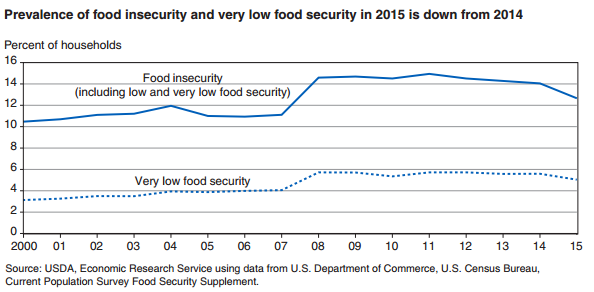American Food Insecurity on the Decline but Still Widespread
American Food Insecurity on the Decline but Still Widespread
Some 15.8 million households lack enough food for healthy lives
Food insecurity in the United States may be declining, but many families are still unsure of where their next meal will come from.
According to the USDA, the number of households that were food insecure at some point during 2015 was down to 12.7% from 14% in 2014. However, food insecurity is more pervasive now than it was in 2007 when it was around 11%, almost a full 2% lower than it is today.
The USDA reports that 15.8 million American households are still food insecure today, meaning they don’t have “enough food for an active, healthy life for all household members.”
The numbers were partially obtained from a survey of about 40,000 households nationwide. The survey asked participants how often they skipped meals because of not being able to afford them or if they had consistent access to balanced meals. According to the survey, the number of households described as having very low food security dropped to 5% in 2015 from 2014’s 5.6%.This means about 6.3 million households struggled almost daily to keep food on the table.
Michael McKee, CEO of the Blue Ridge Area Food Bank in Verona, Virginia, states that although he is encouraged by the drop, the statistics don’t tell the whole story. He told the News Virginian: He told the News Virginian:
“Certain groups are affected. Single parents are more severely affected and people who are poorer.”
McKee also says that the elderly represent a large portion of the food insecure. They are often “invisible,” as they may not reach out for help or physically come to food banks themselves. [1]
Read: The Statistics Prove GMOs Are Absolutely Not “Feeding America”
Additionally, other groups that suffer the most with food insecurity are typically African Americans, Latinos, Native Americans, and households in rural communities.
Elaine Waxman, a senior fellow at the Urban Institute, pointed out that many people suffering from food insecurity are actually farmers, framing the paradox that those who provide food for the nation are often the most likely to go without.
Waxman also emphasized that teenagers may be at further risk for food insecurity, as they may take on adult roles to protect younger siblings or children of their own. In these cases, they may opt to skip meals or give their food to their children or siblings.
“The level of improvement is great, but what’s a little discouraging are the groups traditionally most at risk are still most at risk. A lot of the vulnerable people are still vulnerable, so the people where we’re seeing improvement are the best positioned: people who are white, people who have recent work history, people in geographic areas that have had more [economic] rebound,” Waxman said.
Many schools work to help bridge the gap in food insecurity, making summer one of the worst times for schoolchildren. Some children are able to receive breakfast and lunch at school, but summer vacation doesn’t allow for that to continue.
Although the number of those who are food insecure is decreasing, there is still a long way to go.
| About Anna Scanlon: | |
| Anna Scanlon is an author of YA and historical fiction and a PhD student at the University of Leicester where she is finishing her degree in modern history. You can find out more about Anna and her books on her lifestyle blog annainwonderland.co.uk. | |
Other Popular Stories:
There are no related stories quite yet.


Post a Comment